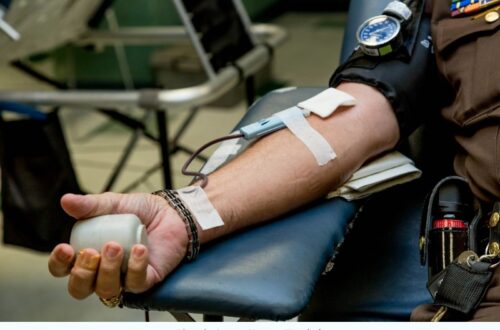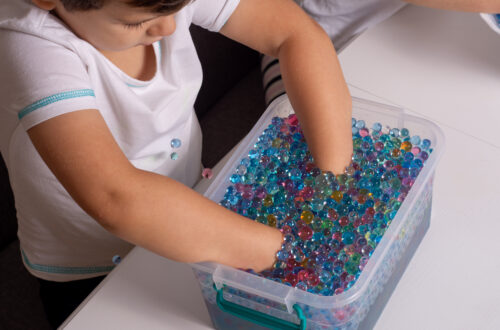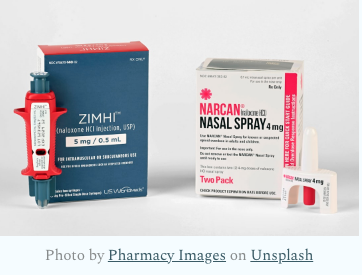
Adding Naloxone to Your First Aid Kit
A couple of weeks ago, two teens in Quebec saved a classmate by using naloxone. They were at a party and they noticed that a classmate was acting odd and had stopped breathing. They correctly guessed she had overdosed on a narcotic and they administered naloxone. By the time paramedics arrived, she was breathing on her own. A first aid course, a naloxone kit, and quick action saved a life.
Naloxone is an opioid antagonist, which means it reverses the effects of opioid drugs. If you overdose on an opioid, the drug suppresses your respiratory system – slowing down or stopping your breathing. If naloxone is given quickly enough, it can restore that breathing within minutes. As a nurse, I’ve seen how effective this drug is. I still remember the first time I saw it work.
Naloxone saves lives
According to the Centers for Disease Control and Prevention (CDC), over 106,000 people in the U.S. died of a drug overdose in 2021. (data for 2022, 2023 is not yet available). Nearly 76% of these deaths were related to opioids; 17,000 of them involved prescription opioids. This is five times more than those who overdosed from narcotics in 1999. Over 11% of the 2021 deaths involved heroin – three times more than in 2020.
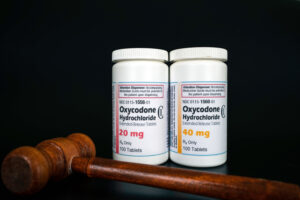
As the numbers rise, so does the need for naloxone.
Naloxone used to be only available by injection but now there is a nasal spray as well. This helps because people who may be unsure about giving injections may be more comfortable giving a nasal spray and both are just as effective. The good thing about naloxone is you can’t go wrong giving it. If a person overdoses on an opioid, naloxone will help. If you find someone who you think might have overdosed, giving naloxone won’t harm them if they didn’t take an opioid. It will do nothing. So it is much safer to err on the side of caution if you have any reason to believe that someone may have overdosed.
How to get naloxone
In September, I wrote in my newsletter, Musings on Medicine & Healthcare; A Nurse’s Point of View, that naloxone would soon be available in the U.S. in pharmacies across the country. You can read that article here. Unfortunately, I also learned that it wouldn’t be free – and it’s not cheap. Kits can also be purchased online at many major retail sites.
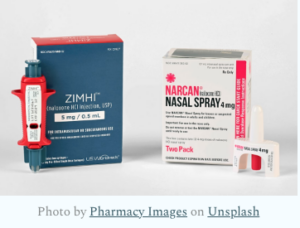
Luckily, some organizations and state departments realized how vital it is to get naloxone into the community and you can get it for free from some places. This site, NEXT Distro, has a list of the states and where you can find naloxone.
In Canada, you can get free naloxone at the pharmacy. The one a few blocks from me has a sticker on the door that says that the naloxone kits are available.
So if you didn’t see the person take a drug, how can you tell if they may have overdosed?
Some symptoms include:
- Slow, shallow, or no breathing
- Slow, erratic or no pulse
- Pale or clammy face
- Blue or dark tinge to the fingernails and lips
- Blue/purple or gray skin
- Choking or gurgling sounds
- Vomiting
- Loss of consciousness
Giving naloxone
First, always call 911. Naloxone works for about 30 to 90 minutes. Since many opioids stay in the system longer, once the naloxone dose wears off, they can lose consciousness and stop breathing again. Always call 911. If the person doesn’t respond right away, you can give a second dose.
The CDC produced these two short videos of how to administer both the nasal spray and injectable naloxone.
The morality of using naloxone
It’s not unusual to hear someone ask, why should I carry naloxone for someone who is taking drugs, taking a risk with their health? Before I address this issue, let’s look at who else might overdose on an opioid.
People who take prescription opioids can overdose. They can accidentally take too much of their medications. They may be in so much pain that they may be confused, forgetful, or have dementia and take extra doses without thinking. Or they may become addicted-which is a sad reality for many people who start taking pain killers. The American Medical Association (AMA) issued a report that estimates that up to 19% of people who take prescription pain medications become addicted to them and, as the site says, “About 45% of people who use heroin started with an addiction to prescription opioids…”
Young children who live in homes where there are prescription or illicit opioids are also at risk. Almost 9,000 children and adolescents died from opioid overdoses between 1999 and 2016. This included 605 children who were younger than 4 years old. Children are also overdosing on fentanyl patches. If a young child finds a patch, they may mimic the adult behavior they’ve seen, putting a patch on themselves or on their playmate. Or they could put a patch in their mouth, as very young children have a habit of doing.
People with dementia who live in a home that has prescription or illicit opioids may accidentally overdose. As someone’s memory fades or they lose their ability to self-regulate their behavior, they may take medications or drugs they find, thinking the medications belong to them.
Now, let’s take a look at those people who choose to take illicit drugs.
Many of the illicit drugs today are laced with fentanyl and it only takes a tiny bit of fentanyl to kill someone. If a person has become addicted to prescription opioids and can no longer get them, they may turn to illicit drugs to help manage their pain and their addiction. One falsely labeled hydrocodone pill laced with fentanyl could cause death.
Teens and young adults can make bad decisions. A teen smoking cannabis for the first time may be taking pot laced with fentanyl. Or a young adult who uses drugs recreationally may make a bad cocaine buy. Do they deserve to die because of those choices?
And now there’s the elephant in the room. The people who are addicted and live for their drugs. Some people believe that by giving them naloxone, we are supporting their addiction. That is not true. A book I read last year really opened my eyes about addictions and overdoses. If you have a minute, please read this newsletter article that summarizes the book: Book Review: Overdose; Heartbreak and Hope in Canada’s Opioid Crisis (don’t let the “Canada” part deter you – the information is just as relevant in the U.S.).
No one deserves to die because they took an opioid overdose. It could be any of us.
Please consider adding naloxone to your first aid kit. You could save a life.
Disclaimer
The information in this blog is provided as an information and educational resource only. It is not to be used or relied upon for diagnostic or treatment purposes.
The blog does not represent or guarantee that its information is applicable to a specific patient’s care or treatment. The educational content in this blog is not to be interpreted as medical advice from any of the authors or contributors. It is not to be used as a substitute for treatment or advice from a practicing physician or other healthcare professional.



